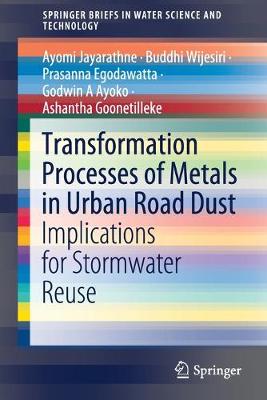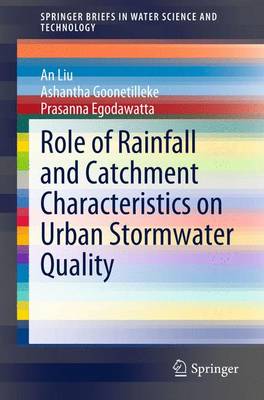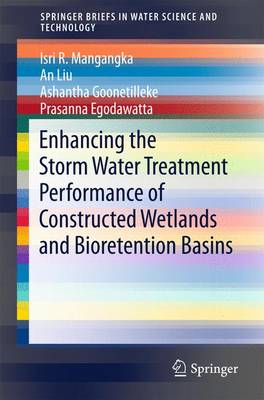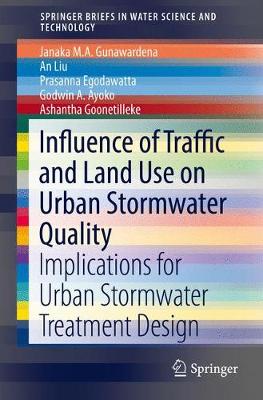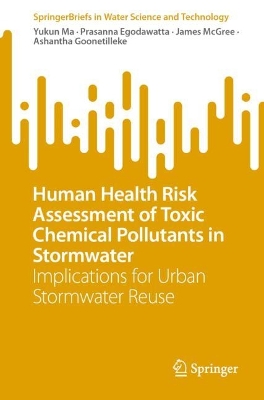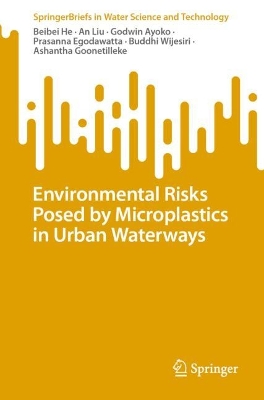SpringerBriefs in Water Science and Technology
7 total works
Transformation Processes of Metals in Urban Road Dust
by Ayomi Jayarathne, Buddhi Wijesiri, Prasanna Egodawatta, Godwin A Ayoko, and Ashantha Goonetilleke
Decision Making with Uncertainty in Stormwater Pollutant Processes
by Buddhi Wijesiri, An Liu, Prasanna Egodawatta, James Mcgree, and Ashantha Goonetilleke
This book presents new findings on intrinsic variability in pollutant build-up and wash-off processes by identifying the characteristics of underlying process mechanisms, based on the behaviour of various-sized particles. The correlation between build-up and wash-off processes is clearly defined using heavy metal pollutants as a case study. The outcome of this study is an approach developed to quantitatively assess process uncertainty, which makes it possible to mathematically incorporate the characteristics of variability in build-up and wash-off processes into stormwater quality models. In addition, the approach can be used to quantify process uncertainty as an integral aspect of stormwater quality predictions using common uncertainty analysis techniques. The information produced using enhanced modelling tools will promote more informed decision-making, and thereby help to improve urban stormwater quality.
Role of Rainfall and Catchment Characteristics on Urban Stormwater Quality
by An Liu, Ashantha Goonetilleke, and Prasanna Egodawatta
This book identifies the key hydrologic and hydraulic factors which influence the performance of stormwater quality treatment systems such as constructed wetlands and bioretention basins. Mathematical relationships derived using conceptual models underpinned by fundamental hydraulic theory are presented to predict treatment performance. The key highlights of the book will include the identification of the linkages between influential hydrologic and hydraulic factors for constructed wetlands and bioretention basins to support more accurate prediction of treatment performance and effective design of these types of stormwater treatment systems. Furthermore, this book will showcase an innovative approach for using conceptual models to analyze stormwater treatment system performance.
Influence of Traffic and Land Use on Urban Stormwater Quality
by Janaka M.A. Gunawardena, An Liu, Prasanna Egodawatta, Godwin A Ayoko, and Ashantha Goonetilleke
Human Health Risk Assessment of Toxic Chemical Pollutants in Stormwater
by Yukun Ma, Prasanna Egodawatta, James Mcgree, and Ashantha Goonetilleke
This book presents a detailed analysis in relation to human health risk assessment of the main toxic chemical pollutants in urban stormwater generated from urban traffic and land use activities. The knowledge presented in this book was derived based on comprehensive experimental investigations including field sampling, laboratory testing, mathematical modelling, spatial analysis and multivariate and univariate statistical data analyses.
The key highlights of the book include the quantitative assessment of the human health risk posed by key toxic chemical pollutants in urban stormwater and the development of linkages between risk and traffic and land use. Additionally, a suite of mathematical equations are presented to predict human health risk based on traffic and land use characteristics through mathematical modelling. These outcomes can significantly assist in effective stormwater risk management under changing traffic and land use in the urban environment. The knowledge presented is of particular interest to readers such as stormwater treatment design specialists, decision-makers and urban planners since these outcomes provide practical suggestions and recommendations for effective urban stormwater treatment design.
